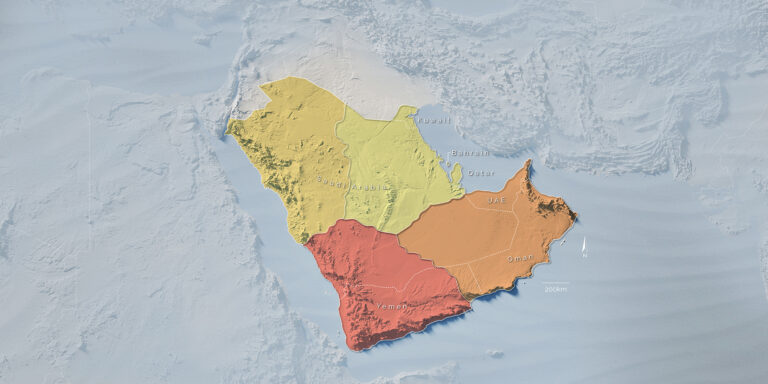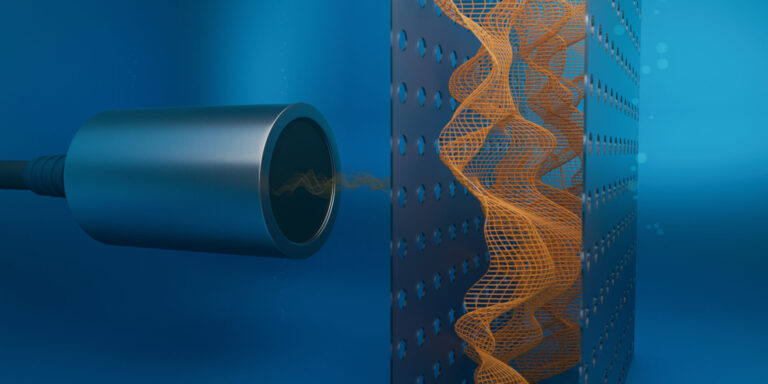Applied Mathematics and Computational Sciences
Tunable sound transmission shapes up
Carefully designed crystal structures can now be tuned to control how they transmit acoustic waves.


We often make use of the phenomena that sound travels well through solids. The new crystal structures could provide unprecedented control over the types of sound waves that can propagate along their surfaces.
© 2016 Alamy 30297482
The ability to control fine-scale acoustic waves known as phonons could lead to new sensing and surgery technologies, or even materials that are invisible to sonar. This pursuit led KAUST researchers to describe new phononic crystals whose properties can be tuned to control the propagation of different frequencies of phonons1.
Ying Wu from the University’s Computer, Electrical and Mathematical Science and Engineering Division explains that the researchers’ work was inspired by a phenomenon called topological insulation, which was first observed in electronic systems.
Conventionally, if a material is an insulator, then no part of it will conduct electricity. This logic was turned on its head by the discovery of topological insulators, which have insulating interiors but conducting states on their surfaces that can be manipulated for applications such as quantum computing.
Researchers have extended the concept of topological insulation to materials that only allow certain light or sound waves to propagate on their surfaces. Specifically, these materials may break a physical property called time-reversal symmetry (TRS) to produce a bandgap, a range of frequencies at which no phonons can be transmitted.
“Compared to quantum and electromagnetic systems, acoustic systems did not draw much attention because TRS in acoustic systems is intrinsically conserved,” said Wu. “This situation changed in 2015, when several methods were proposed to break TRS in acoustic systems, such as introducing rotating fluids.”
The phononic crystal design proposed by Wu and her Ph.D. student Ze-Guo Chen involves air flowing around a lattice of ring-shaped waveguides. It could be built from any acoustically-hard material such as steel, with the air velocity controlled by fans. Through numerical experiments, the researchers showed that they could tune the properties of the bandgap by altering either the geometry of the crystal lattice or the airflow itself, thus permitting or blocking different types of phonons from traveling along the surface.
This tunability, which results from the interplay between the TRS and the geometry of the crystal, is a major breakthrough for KAUST and for materials science in general.
“In fact, tuning the phononic band gap itself is not as exciting as tuning the topology or shape of the gap,” said Wu. “An interface between two materials with different topological properties in their band gaps would support a special kind of edge state, which only propagates along one direction. A direct consequence is that the edge state is robust and immune to back-scattering, which can be applied in many areas, such as tunable acoustic invisibility from detection.”
References
- Chen, Z.-G. & Wu, Y. Tunable topological phononic crystals. Physical Review Applied 5, 054021 (2015).| article
You might also like

Applied Mathematics and Computational Sciences
Bringing an old proof to modern problems

Applied Mathematics and Computational Sciences
Accounting for extreme weather to boost energy system reliability

Applied Mathematics and Computational Sciences
Past and future drought patterns across the Arabian Peninsula

Applied Mathematics and Computational Sciences
New pattern for underwater resonators

Applied Mathematics and Computational Sciences
Finer forecasting to improve public health planning

Applied Mathematics and Computational Sciences
Global look at sex differences in young people's mortality

Applied Mathematics and Computational Sciences
Going likelihood-free with neural networks

Applied Mathematics and Computational Sciences



